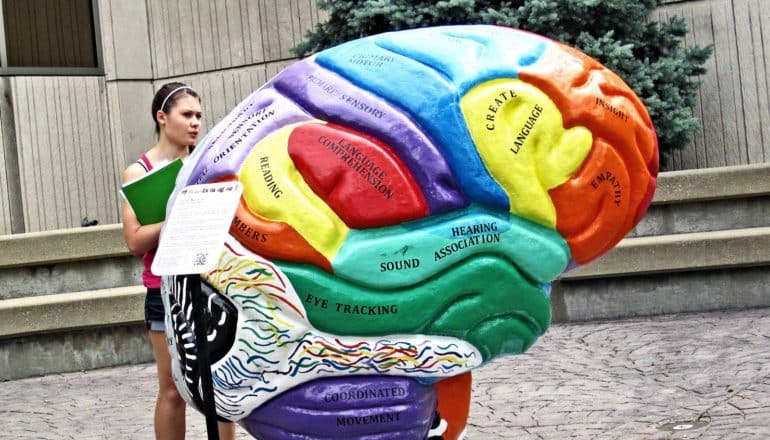
A new method allows anyone to 3D print interactive objects, researchers report.
These might include models of the brain for use as educational tools, for example.
Slowly but surely, we print pretty much everything on 3D printers. We can now create eyeglasses, buildings, hearing aids—even new hip bones—using a few materials that, once connected to a 3D printer, are layered into a desired object. It almost seems like magic.
Now, researchers have developed an easy to use technique for making 3D printed objects interactive.
“The wild thing about our technique is that, in principle, anyone can use it to print objects and make them interactive—i.e. store information for specific parts of an object. For example, you can print a model of the brain, a bone, or a cell for educators to use,” says Carlos Eduardo Tejada, a PhD student at the computer science department at the University of Copenhagen.
Getting touchy feely
Being able to print a model of the brain at home might sound crazy. But if you can draw it in 3D, you can print it too—and that’s true across the board, explains Tejada. The discovery that an air compressor and pneumatic sensors can make otherwise static objects interactive is entirely new.
“We refer to our technique as AirTouch. Here, we blow air into 3D printed objects by way of tiny hoses with small openings that inject air and sense external pressure using a computer,” says Tejada.
In the future, Tejada envisions using the technique as an educational tool. Teachers could use it a biology class, where students sit with their own models of a brain and press on individual lobes to retrieve information about a specific function, via a computer.
Other than using it as a teaching tool, Tejada also hopes that the technique can help people with vision impairments.
“One might imagine the usefulness for someone who is blind, sitting with an object, uncertain about what is what. Here, we have the ability to store information within the object and have it read out loud, ‘this is the nose’ and ‘this is the ear’,” he says.
Anyone can use it
Another unique aspect of the AirTouch technique is that, in principle, anyone can use it.
“It doesn’t take more than 10 seconds—or perhaps a few minutes—to connect the hoses into your 3D printed object, blow air into it, and detect what you are pressing,” he says.
The only things required are a 3D printer, costing between DKK 1,500 and DKK 15,000 (€200-€2000 or $217.19-$2,171.01), an air compressor, and a pressure sensor.
“You don’t need any training or much knowledge beforehand. Simply watching our video of the technique allows anyone to get started,” explains Tejada.
The next phase of the study, which will serve as a contribution to the ACM CHI Conference on Human Factors in Computing Systems, is to develop a technique that increases the number of pressure points on 3D printed objects. Currently, the method can take pressure measurements from 12 separate points on an object.
Source: University of Copenhagen
The post You can 3D print your own interactive objects appeared first on Futurity.
from Futurity https://ift.tt/3bs3eFd
No comments:
Post a Comment